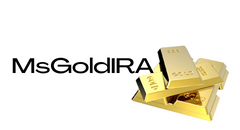Bitcoin's rise to six-figure territory has become commonplace, making higher prices seem inevitable. In this scenario, analyzing key on-chain data becomes crucial for gaining insights into the market's underlying health. By comprehending these metrics, investors can anticipate price movements more effectively and prepare for potential market peaks or retracements.
Terminal Price
The Terminal Price metric, incorporating Coin Days Destroyed (CDD) while considering Bitcoin's supply, has historically served as a reliable indicator for predicting Bitcoin cycle peaks. CDD measures the velocity of coin transfers based on holding duration and the quantity of Bitcoin moved.
Puell Multiple
The Puell Multiple assesses daily miner revenue (in USD) concerning its 365-day moving average. Post-halving, miners faced a revenue decline, leading to a consolidation phase. Currently, the Puell Multiple has risen above 1, signaling a return to profitability for miners and indicating later stages of a bull cycle with potential exponential price rallies.
MVRV Z-Score
The MVRV Z-Score compares market value to the realized value of Bitcoin holders, standardizing it into a Z-Score to accommodate the asset's volatility. Currently below the overheated red zone, around 3.00, the MVRV Z-Score suggests room for growth, indicating the market is far from a euphoric peak.
Active Address Sentiment
This metric monitors the 28-day change in active network addresses alongside price change over the same period. Recent data shows a slight cooling after Bitcoin's rapid climb, indicating a healthy consolidation phase, preparing for sustained long-term growth.
Spent Output Profit Ratio
The Spent Output Profit Ratio (SOPR) gauges realized profits from Bitcoin transactions. Recent data indicates increased profit-taking, potentially signaling the cycle's latter stages, with a note on the influence of Bitcoin ETFs and derivative products on SOPR values.
Value Days Destroyed
The Value Days Destroyed (VDD) Multiple builds on CDD by focusing on larger, long-term holders. While current VDD levels suggest a slightly overheated market, history shows sustainability in this range for months before a peak, with past instances from 2017 as a reference.
Collectively, these metrics indicate Bitcoin's progression into the later stages of its bull market, with potential resistance levels between $150,000 and $200,000 for this cycle. As we near the peak, metrics like SOPR and VDD can provide clearer signals for investors.
For a more detailed exploration of this topic, consider watching a recent YouTube video: "What's Happening On-chain: Bitcoin Update."
Disclaimer: This content is for informational purposes only and should not be construed as financial advice. Always conduct thorough research before making any investment decisions.
Frequently Asked Questions
What Precious Metals Can You Invest in for Retirement?
These precious metals are among the most attractive investments. They're both easy to buy and sell and have been around forever. They are a great way to diversify your portfolio.
Gold: The oldest form of currency known to man is gold. It is stable and very secure. It's a great way to protect wealth in times of uncertainty.
Silver: The popularity of silver has always been a concern for investors. It is an excellent choice for investors who wish to avoid volatility. Silver is more volatile than gold. It tends to rise rather than fall.
Platinium is another precious metal that is becoming increasingly popular. It is very durable and resistant against corrosion, much like silver and gold. However, it's much more expensive than either of its counterparts.
Rhodium: Rhodium is used in catalytic converters. It is also used to make jewelry. It's also relatively inexpensive compared to other precious metals.
Palladium – Palladium is an alternative to platinum that's more common but less scarce. It's also more accessible. It is a preferred choice among investors who are looking to add precious materials to their portfolios.
How is gold taxed within an IRA?
The fair value of gold sold to determines the price at which tax is due. You don't have tax to pay when you buy or sell gold. It is not considered income. If you sell it later, you'll have a taxable gain if the price goes up.
For loans, gold can be used to collateral. Lenders seek to get the best return when you borrow against your assets. This usually involves selling your gold. There's no guarantee that the lender will do this. They may keep it. Or, they may decide to resell the item themselves. Either way, you lose potential profit.
To avoid losing money, only lend against gold if you intend to use it for collateral. Otherwise, it's better to leave it alone.
Can I have physical gold in my IRA
Gold is money, not just paper currency or coinage. It's an asset that people have used for thousands of years as a store of value, a way to keep wealth safe from inflation and economic uncertainty. Investors today use gold to diversify their portfolios because gold is more resilient to financial turmoil.
Many Americans today prefer to invest in precious metals, such as silver and gold, over stocks and bonds. It is possible to make money by investing in gold. However, it doesn't guarantee that you'll make a lot of money.
Gold has historically performed better during financial panics than other assets. Gold prices rose nearly 100 percent between August 2011 and early 2013, while the S&P 500 fell 21 percent over the same period. Gold was one of the few assets that performed better than stocks during turbulent market conditions.
The best thing about gold investing is the fact that there's virtually no counterparty risk. If your stock portfolio goes down, you still own your shares. You can still own your gold even if the company where you invested fails to pay its debt.
Finally, the liquidity that gold provides is unmatched. You can sell your gold at any time without worrying about finding a buyer, which is a major advantage over other investments. Gold is liquid and therefore it makes sense to purchase small amounts. This allows one to take advantage short-term fluctuations within the gold price.
Which precious metal is best to invest in?
The answer to this question depends on how much risk you are willing to take and what type of return you want. Although gold has been considered a safe investment, it is not always the most lucrative. You might not want to invest in gold if you're looking for quick returns. If you have time and patience, you should consider investing in silver instead.
If you don’t desire to become rich quickly, gold may be your best option. If you are looking for a long-term investment that will provide steady returns, silver may be a better choice.
Can I buy gold with my self-directed IRA?
While you can purchase gold from your self-directed IRA (or any other brokerage firm), you must first open a brokerage account such as TD Ameritrade. If you have an existing retirement account, you can transfer funds to another one.
The IRS allows individuals contributing up to $5.500 each ($6,500 if married, filing jointly) into a traditional IRA. Individuals can contribute as much as $1,000 per year ($2,000 if married filing jointly) to a Roth IRA.
If you do decide to invest in gold, you'll want to consider purchasing physical bullion rather than investing in futures contracts. Futures contracts are financial instruments that are based on gold's price. These contracts allow you to speculate on future gold prices without actually owning it. But physical bullion refers to real gold and silver bars you can carry in your hand.
What is the Performance of Gold as an Investment?
The supply and demand for gold affect the price of gold. It is also affected negatively by interest rates.
Gold prices are volatile due to their limited supply. There is also a risk in owning gold, as you must store it somewhere.
Statistics
- The price of gold jumped 131 percent from late 2007 to September 2011, when it hit a high of $1,921 an ounce, according to the World Gold Council. (aarp.org)
- Instead, the economy improved, stocks rebounded, and gold plunged, losing 28 percent of its value in 2013. (aarp.org)
- If you accidentally make an improper transaction, the IRS will disallow it and count it as a withdrawal, so you would owe income tax on the item's value and, if you are younger than 59 ½, an additional 10% early withdrawal penalty. (forbes.com)
- This is a 15% margin that has shown no stable direction of growth but fluctuates seemingly at random. (smartasset.com)
- Indeed, several financial advisers interviewed for this article suggest you invest 5 to 15 percent of your portfolio in gold, just in case. (aarp.org)
External Links
forbes.com
- Gold IRA, Add Sparkle to Your Retirement Nest egg
- Understanding China's Evergrande Crisis – Forbes Advisor
law.cornell.edu
- 7 U.S. Code SS 7 – Designation of boards of trade as contract markets
- 26 U.S. Code SS 408 – Individual retirement accounts
wsj.com
- Saddam Hussein's InvasionHelped Uncage a Bear In 90 – WSJ
- Do you want to keep your IRA gold at home? It's not legal – WSJ












